1. What exactly is a smart city?
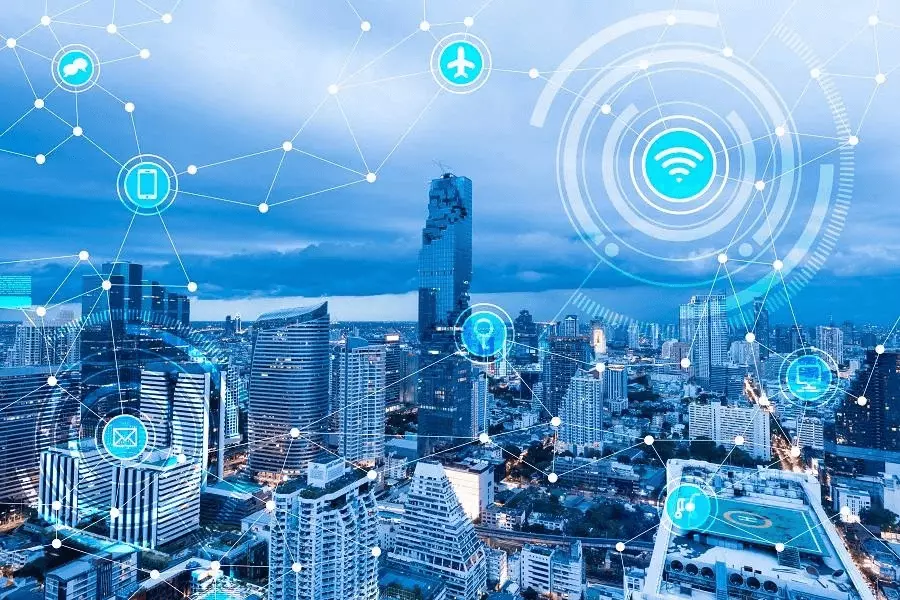
Originating in the media field, Smart City refers to the integration of services and urban systems with various innovative concepts or urban systems so as to optimize urban management and services and enhance the efficiency of resource utilization. Smart city is an advanced form of urban informatization that fully applies to the new generation of information technology. Big cities can be alleviated by the deep integration of urbanization. This article will take you to comprehensively understand what is smart city.
2. How do smart cities work
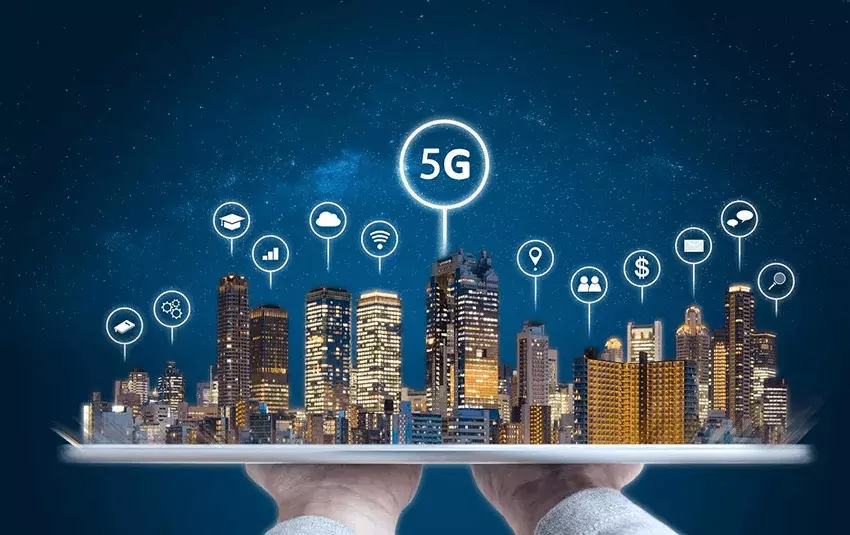
The urban planning and architecture should be pleasing to the eye, so that the citizens living in it can cultivate their temperament and have a pleasant mood.
The city of Dubuque partnered with IBM to build the first smart city in the United States in 2009. Various city public resources are connected in a community of 60,000 residents. Dubuque’s first step was to install CNC water meters in all homes and shops. Waste can be prevented by low-flow sensor technology.
Based on the web, South Korea will build a green, digital, seamless mobile connected eco-smart city. Clients can easily conduct medical treatment, tax processing, distance education, and realize intelligent monitoring of home building energy consumption by integrating public communication platforms and ubiquitous network access.
IBM officially put forward the vision of “smart city” in 2010, believing that 6 core systems construct the system, they are business/government, organization, communication, water and energy, and transportation, which are related to the main functions of the city.
3. What technologies are used in smart cities
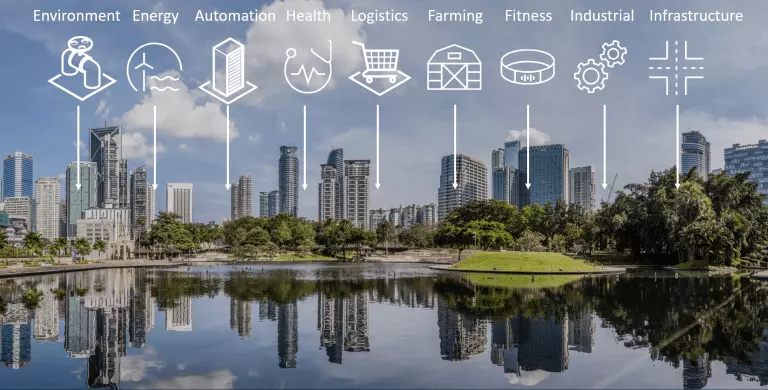
According to several reports, the smart city industry will see a huge boom in the next five to seven years, with a market valuation expected to exceed $400 billion. In 2020, there are more than 600 smart cities in the world that will play a key role in a reasonable share of global GDP. Smart cities combine the power of technology to provide additional visibility and services to cities. Here are five key technologies that any smart city needs for efficient and sustainable living.
1. Smart energy
Energy is a basic requirement for any smart city. Energy drives all technology and powers human life while working, shopping, eating, playing and even sleeping. Smart cities should provide smart energy for their buildings, which can be achieved by using the latest technology to improve energy efficiency.
All buildings would use energy-efficient lighting systems, including LED lighting that supports digital communication. The main reason for choosing LED lighting systems is that LED lamps can save a lot of energy and pay for themselves in a few years. In addition, LED lights can be easily integrated into the current infrastructure.
To create sustainable energy use, smart cities should rely heavily on renewable energy, the most important of which is solar. Solar power can be the main source of energy for smart cities because it reduces the use of fossil fuels and thus pollution levels. Installing solar systems in commercial and residential buildings is beneficial for the city’s carbon footprint.
All energy is transmitted through the grid, and in the case of smart cities, the grid is smart. Smart grids can help implement useful systems. The smart grid elevates the smart energy ecosystem across the city, enabling the energy sector more competitive.
In conclusion, smart cities should have a robust data system that can collect and analyze data about residents’ energy consumption. The data can be used to create an improved grid management system, create efficient energy distribution mechanisms and regulate electricity production. In addition, residents who monitor their energy use can take concrete steps to reduce costs, which can lower bills and improve the energy efficiency of their homes. But because smart energy systems are digital, they are vulnerable to hacking, making it necessary for agencies to invest heavily in security measures to protect systems from attack.
2. Intelligent Transportation
A city’s transportation system is crucial to maintaining mobility. The current traffic situation in many parts of the world is inefficient and congested. Smart cities transcend all that, however. Smart cities support multi-mode transportation systems, including smart traffic lights, smart parking and electric cars. By implementing the smart parking system, people are more productive because they don’t have to look around for parking Spaces and waste precious time.
Another key area of its impact is traffic congestion. With the implementation of smart parking, people know when and where to park, which helps reduce traffic congestion on the roads.
Smart transportation systems also connect to public transportation, providing citizens with real-time information about when buses and other transportation will arrive. As the transportation system boomed, it collected data on the movement of people, vehicles and traffic flow through a multitude of sensors, which helped reduce vehicle flow and help the city run smoothly and safely.
3. Intelligent data
Data is part of a smart city because it is collected through every sensor, no matter how small, and can be further used. The vast amount of data collected is worthless without analysis. The results can be used to make some adjustments to the city’s system to create a more efficient one once the data is analyzed. Even the smallest amount of data, whether it’s the temperature in your room or how many cars are at traffic lights, can benefit citizens in one way or another. Smart data is one technology it needs to satisfy as smart cities are huge hubs of data sets.
To analyze data requires resources and infrastructure, which is why many organizations are looking for new options to analyze data. The data can then be recommended to the relevant authorities, who can act on it. Therefore, it is important to have a deep understanding of the data and how to analyze it to extract correlations from it.
4. Smart IoT devices
These devices are key components in smart cities. Smart cities should be equipped with actuators and sensors that collect relevant data to improve the city’s different systems. Data from a variety of devices (visibility devices, speed sensors, pollution sensors, etc.) are indeed operational elements of smart cities.
In smart cities, data or information can be retrieved directly from deployed sensors. As more sensors are deployed, the dependence on these sensors increases, and the need for their accuracy and reliability increases, as poor quality severely impacts the systems they are connected to.
But deploying countless sensors in smart cities brings its own set of challenges. Bandwidth availability will be severely challenged unless new technologies are introduced that minimize bandwidth usage even as the number of devices increases when the number of sensors in cities increases. That said, many devices also pose malware or hacking threats, and given the importance of their needs, authorities need to keep them secure.
5. Smart infrastructure
Smart cities should have smart infrastructure that helps cities better analyze data and proactively maintain and plan for the future. For example, systems that can monitor lead levels in a city’s water supply in real-time can prevent serious and large-scale health problems.
Requirements may be large or small though the infrastructure should be in place to handle them. In addition, self-aware infrastructure takes care of itself, reducing downtime and improving operational efficiency.
Key requirements for smart infrastructure come from the need for better data that can help you better understand how your infrastructure behaves in different situations. This data can help transform cities’ buildings, healthcare, productivity, and other systems to increase productivity and reduce carbon footprints while promoting sustainable living systems.
4. Smart City Solutions

Smart parking solutions for smart cities
As more and more families buy cars, the number of vehicles in the city increases significantly, while parking Spaces are becoming increasingly scarce. How to efficiently manage the parking lot, efficiently serve the car owners, and achieve the goal of comprehensive parking management and intelligent transformation to solve the human resources has posed a challenge to the development of smart city.
Build smart city solution based on TV optical fiber network
Building smart city solutions based on cable TV optical fiber network, including the construction objectives, requirements, tasks and technical key points of the new smart city, provides solutions for county-level smart city construction as reference.
How can geospatial solutions contribute to smart city security?
One unexpected consequence of the COVID-19 pandemic is that it has inspired a host of complex technological innovations in response to the pandemic. Smart city control centers are being retrofitted and updated to monitor public health risks affected by COVID-19 around the world. The key to this evolving technology relies on geospatial data collection, as real-time location data collection makes tracking possible and effective at scale-up.
Pain points and solutions for new smart city construction
Smart city is the use of information and communication technology to make intelligent responses to various needs including people’s environmental protection, livelihood, urban services, industrial and commercial activities, and public security.
Smart city bus application solution based on 5G network
Through analyzing industry demand for the urban public transport industry and 5G mobile communication network technology advantage, based on 5 g networks for high efficiency, security and intelligence of wisdom city bus operation solution, and most pressing needs in the bus industry, several future is given based on the wisdom of the 5G network bus vertical industry application solutions, so as to promote the wisdom city under the background of 5G Mobile communication network and smart city bus operation.
Platform-level storage solutions help smart cities
Imagine that you want to go out by bus, you can use an APP to conduct real-time bus query, know the location of the target bus and the distance of the bus stop, and decide the time to go out; Or if you want to drive, you can check the real-time traffic conditions, decide which route to take to avoid congestion, and know the available parking space near your destination in advance. Or you want to pay a variety of living expenses, social security, provident fund inquiry, appointment registration, etc., all these things closely related to life, you can operate through an APP to complete.
Smart City Community informatization solution — Smart community planning scheme
With the continuous development of smart city, smart community emerges, but it is still in the preliminary research stage. Analysis in the process of the intelligent community construction, therefore, needs a variety of information technology, such as the Internet of things technology, and cloud computing technology, introduced to promote the concrete method of the informatization construction of intelligent community, from the various angles of the community construction process, put forward the construction scheme of intelligent community, including property management, community endowment services, medical systems, electronic information screen, security systems, and supervisor Control video management, etc.
Research on sensorless traffic solution of expressway toll station in smart city
The traffic efficiency of expressway toll stations has become a hot issue in smart cities, especially the phenomenon of vehicle congestion caused by slow traffic at entrances and exits during holidays. Service modes such as manual card pickup and manual toll collection are no longer suitable for the development requirements of smart cities. Through high-definition video surveillance license plate recognition technology, the Internet of Things, mobile payment and other technologies, the solution of perceptive passage at the entrances and exits of expressways is proposed.
Smart city one-card system solution
One-card, we naturally think of urban public transport card, social security card, medical security card, citizen card, business union card, yes, they are the specific application and practices of the city one-card. The urban One-card is a one-card system in the metropolitan area, through issuing smart cards to citizens, realizing the functions such as identity verification, consumption and payment
Public service platform solution for smart city
This paper proposes a public service platform solution applied to smart city. By defining a vehicle-based information data set and constructing an open system framework to realize the upload and distribution of vehicle information data set, the system can support public services.
Regional healthcare solutions under the framework of smart cities
The idea of creating an overall solution of regional medical integration under the framework of smart city is proposed. Methods: Through the analysis of the business problems in the medical and health field, the involved business units were sorted out, the whole process of health management, the full coverage of the business centered on health records, the integrated service design concept of citizen card as the carrier was planned, and the overall framework of regional medical and health solutions under the framework of smart city was designed.
Results: Relying on high-end information technology means such as smart city, Internet of things, cloud computing and virtualization, a comprehensive integrated regional medical and health solution was constructed. Conclusion: The solution can improve the level of medical service, improve the quality of medical service, promote the scientific management and decision-making of medical and health, and improve the ability of public health emergency response.
5. What are smart cities example?

Application of video surveillance big data in smart city
With video surveillance big data as the starting point, this paper expounds the application value of video surveillance big data from three aspects of data application, data value mining and innovation system, and discusses the in-depth application of video surveillance big data in the fields of public security, intelligent transportation and intelligent travel.
Then, measures to improve the application efficiency of video surveillance big data in smart city are proposed. It aims to solve practical problems encountered during the construction and management of smart cities by relying on video surveillance big data, promote the healthy development of smart cities, and provide experience for the application and promotion of video surveillance big data.
Application of quantum encryption for 5G network in smart city
With the development of the 5G wireless network, there are more and more factors affecting wireless network security, and its related applications are facing information security problems. In view of the security status of wireless networks, quantum communication technology has the characteristics of unconditional security, which is an important solution for the security protection of various scenarios of smart cities in the future.
Quantum key distribution technology for 5G wireless network, and the innovative application of quantum encryption in smart city related fields, and finally explore the security research and application prospect of the fusion of quantum encryption technology and 5G network.
Application of smart city security situation awareness system
With the advancement of urban intelligent construction, massive pan-terminal access and rich intelligent applications make city-level network security situations complex and changeable, and it is difficult to control and control global network security risks. City level security situation awareness system research based on the city as a unit body, from a global city with a view to building through cross network, cross-domain network threats, the monitoring of network viruses, network attack ability, aimed at integrating urban cross-industry, interdisciplinary, cross ecology, multidimensional physical and digital city under the scenario of full-time, analysis of global security threats and situational awareness, From the city as a whole, the ability of network threat perception, supervision and analysis, coordination and command, as well as the ability to comprehensively fight against cyberspace attacks should be improved, and the security foundation of urban digital development should be established to guarantee the rapid development of smart cities.
Application of intelligent light pole in smart city
Smart light poles are applied to urban construction. Smart light poles take road lighting poles as the main carrier, integrate monitoring, traffic, communication base station and other facilities, and carry different kinds of equipment according to demand, providing basic services such as smart lighting, traffic management and information release for the city. Discuss the functional design of the smart light poles, their application in smart cities and a case study.
Application of green water supply and drainage pipeline construction technology in smart city
This paper discusses the application significance of green water supply and drainage pipeline construction technology in smart city, and generalizes from the aspects of saving water resources utilization, alleviating environmental pollution, and improving the integration between buildings and the ecological environment. The optimization scheme of green water supply and drainage pipeline construction technology in smart cities and the specific application mode of construction technology are put forward. It helps to improve the resource saving effect of building water supply and drainage pipe design and enhances the comprehensive utilization capacity of water resources in urban development.
Application of tilt photogrammetry in smart city construction
In order to solve the problem of high cost and difficulty in acquiring basic geographic data in the construction of a traditional smart city, the inclined photogrammetry method is used to produce basic geographic data, and the application of basic geographic data acquisition and real 3d model results in smart city is analyzed. It includes the production of a digital elevation model (DEM), digital line drawing (DLG), digital true projective map (TDOM) and real 3d model, providing ideas for smart city builders to change operation mode, and improve operational efficiency and reduce production costs.
Application of intelligent transportation in smart city
Based on intelligent traffic related concepts and functions on the basis of analysis the relationship between transportation and wisdom city, and points out that the edge calculation can fully meet the needs of the industry, and big data from vehicle applications and data services analyzing large data used in intelligent traffic.
Application of high-resolution remote sensing in the new infrastructure of smart city
New wisdom city construction mainly includes the information infrastructure, the integration of infrastructure, three aspects of innovation infrastructure, remote sensing technology in the real-time dynamic to get a high score of wide-area topography and geomorphology, natural resources, land use and cover, urban and economic geographical and economic factors such as information has a unique advantage, is an important supporting technology of intelligent city new infrastructure.
Application of video surveillance technology in smart city
Intelligent video surveillance technology, including video compression technology, embedded design, streaming media technology, diversified video real-time acquisition, video data coding, intelligent algorithm logic, remote network services, video data decoding.
Application of GEOGRAPHIC Information System in the smart city mapping
With the acceleration of urbanization, people have higher and higher requirements for urban construction. How to improve the quality of urban construction and optimize the layout of urban functions has become the focus of current urban construction. As an advanced surveying and mapping technology, a geographic information system (GIS) can provide professional data support in urban surveying and mapping to ensure the maximum benefit of urban construction.
Compared with other mapping technologies, the GEOGRAPHIC information system has many advantages in practical application, which can significantly improve the efficiency and level of urban mapping and obtain more accurate measurement data. It is an indispensable technical form for smart city construction.
Application of data mining technology in smart city construction
The application of data mining technology in smart city construction, the process of massive data collection, processing, analysis and calculation, and the sharing of data and data collection process are discussed to prevent repeated operations and excessive collection, while protecting data privacy and security.
Application of smart electricity technology in smart city
In order to solve the problems in urban management, planning, transportation, infrastructure and other fields, people put forward the concept of a smart city. This paper mainly conducts theoretical research and practical analysis on smart energy technology for building a smart city in China.
Application of UAV remote sensing technology in smart city construction
With the rapid development of science and technology and the continuous improvement of people’s quality of life, the concept of smart city has been paid more and more attention and gradually become the main product of the integration of urbanization and informatization. Based on this background, uav remote sensing technology monitoring comes into being. This paper analyzes the application of UAV remote sensing technology in smart city construction in detail, so as to promote the further development of urban construction.
Application of NB-IoT technology in smart city construction
In the application of NB-IoT, the obvious advantages of NB-IoT technology in terms of high penetration, low cost, low energy consumption and small volume have been verified in the project in practical business scenarios such as intelligent control of street lamps, comprehensive monitoring of underground pipe network, water environment monitoring, intelligent monitoring of good covers and intelligent monitoring of fire hydrants.
6. Advantages and benefits of smart city
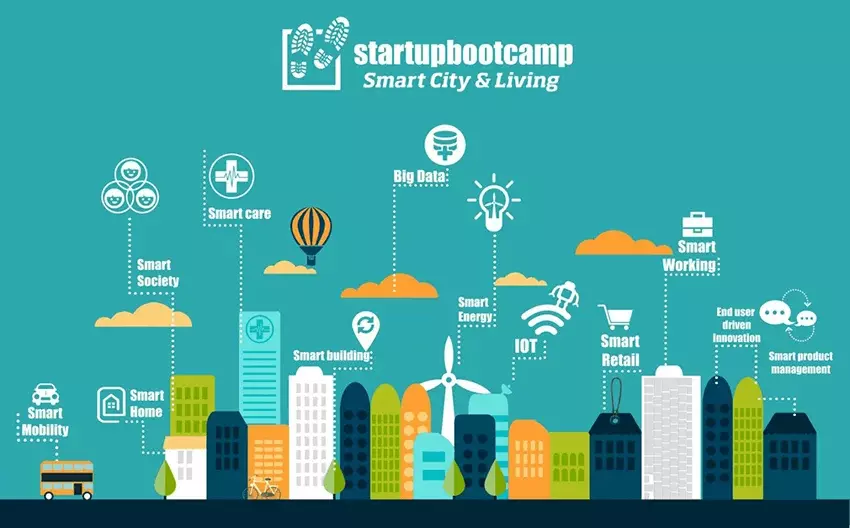
1. With the development of “big data” and connected devices, cities are able to obtain the information they never had before. Carefully designed data analysis strategies enable municipal officials to easily gather meaningful, actionable insights. Service levels rise rapidly when a city can monitor the desired metrics in real-time. Effective strategies and big data applications can provide cities with information. IoT and big data offer endless possibilities for more powerful decisions. This can enhance people’s lives by improving services.
2. Enhance citizen and Government Engagement. Citizens today expect their cities to provide robust, user-friendly digital services. Modern and intuitive websites, collaboration tools, mobile applications have become the norm in many aspects of life, as have the expectations of citizens in their cities. The expansion of digital services in communities promotes civic-connected experiences.
3. Safer Neighborhoods. Smart cities are safer cities. Many cities are already investing in smart technology to help build a safer community.
smart cities are fighting back to reduce their negative impact on the environment with the rise of debris in the ocean and litter on our streets. Air quality sensors, renewable energy and energy-efficient buildings provide cities with new tools to reduce their ecological impact. For instance, deploying air quality sensors around cities could provide data to identify causes of pollution, provide data analysts and track peak times of low air quality.
Investment in smart city transportation is anticipated to grow by up to 25% annually over the next five years. From enhanced traffic management to the ability of mass transit riders to track buses or trains, smart technology can enable cities to better serve their citizens, even as their populations often grow rapidly. Investment in smart city transportation is expected to grow by more than 25% annually over the next five years. Smart parking management allows cities to tap into additional revenue streams. Reduced traffic congestion, the growth of autonomous vehicles and efficient vehicle routing have all reduced the need for vehicle-related space in urban areas, making it possible to expand land for development.
6. Increasing digital assets. Smart city technology creates a more equitable environment for citizens. Individuals must be available for affordable equipment and high-speed Internet services to ensure equity in digital assets. Strategic adoption of public Wi-Fi hotspots throughout the city is able to provide high-speed Internet services.
Efficient Utilities With the limited supply of natural resources to meet human needs, smart technologies provide cities with the tools they need to effectively protect and reduce unwanted waste of water and electricity.
9. Improving the aging infrastructure of roads, Bridges and buildings usually require substantial investment to maintain and repair their useful lives. Smart technology is able to provide predictive analytics to identify areas that need to be fixed before infrastructure fails. These features save cities huge opportunities for tax revenue and life from preventable infrastructure failures.
10. Increase employee engagement. An efficient workforce is an essential criterion to achieve an efficient smart city. Deploying smart technology helps reduce the burden of manual tasks. Advances in autonomous agency capabilities, mobile devices, roaming devices, and sensors allow city employees to shift their energies to more strategic initiatives, reducing the amount of time spent on daily manual operations.
7. What are the challenges of smart cities
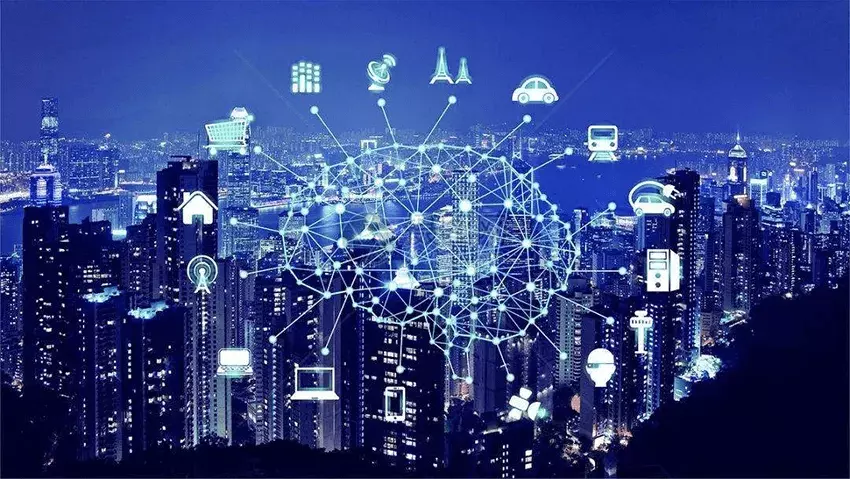
Smart city is a novel solution to effectively utilize natural resources, improve residents’ living standards and achieve economic development.
To succeed, however, smart cities’ challenges should first be addressed.
Smart cities have been one of the main topics in the news media for quite some time. Through the use of digital technologies, urban functions can be simplified and optimized while minimizing negative ecological impacts. At the same time, smart cities raise fiscal revenue and improve citizens’ quality of life. Governments, technologists and urban planners are working together to turn this ambitious idea into reality. Governments are also adopting smart governance to implement good governance principles. Moreover, policymakers are implementing procedures and policies to ensure the rapid development of the city. But despite all these efforts, we still haven’t achieved much. That’s because smart cities still have some challenges to solve. The problems that hinder the success of smart cities should first be considered and addressed before any other measures are taken.
1. Insufficient funds
According to a report by SmartCitiesWorld, insufficient funding is the biggest challenge for implementing smart city strategies. In addition, numerous smart devices must be integrated to collect data. In addition, to ensure the success of smart cities, governments must hire enough technical experts and urban planners. In addition, network requirements must be correctly met. In addition, installed hardware must be checked frequently for maintenance. All this requires a lot of money.
2. Lack of experienced professionals
For smart city projects to succeed, technical expertise is needed to identify areas to implement technologies and operate these tools. Governments and relevant stakeholders should count the number of professionals needed and hire them before embarking on project plans.
3. Network connections are inconsistent
To administer a city intelligently, sensors, cameras and actuators are everywhere. The analysis and processing of the collected data should be carried out almost instantaneously in order to effectively manage city operations. For instant processing, a high-speed Internet connection is a must. Currently, 4G mobile networks exist and are not efficient enough for high-speed data transmission. Therefore, this issue must be fully considered.
4. Network security risks
According to IHS, smart city devices are expected to exceed 1 billion units by 2025. While this data helps improve the efficiency of municipal departments, there are also serious security risks that cannot be ignored. Data from security cameras, parking lots, GPS systems and electric car charging stations contain confidential information about citizens. So far, not every connected device is network resilient. Therefore, governments and IT professionals should enforce the security boundaries of smart devices and supporting infrastructure.
Identifying and addressing smart city challenges requires a collaborative approach.
8. Are smart cities safe?
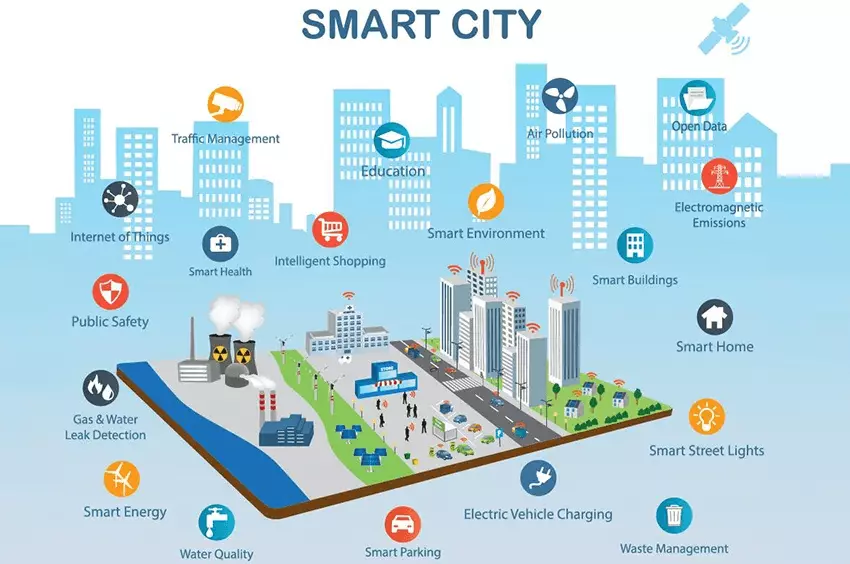
The extent of the damage cybercriminals could cause in a fully connected city.
The benefits of connected cities are many, but as the basis for a range of connected devices, they also show their greatest vulnerability. A utilized sensor can provide an entry point for an attacker, effectively making the entire system insecure.
Without the right cybersecurity measures, smart cities are vulnerable to malicious intrusions and criminal activity. In 2014, for example, researchers were able to hack into nearly 100 wi-fi traffic lights in the U.S. state of Michigan. In this case, researchers infiltrated the network relatively easily by using default usernames and passwords that could be found online. If the act is replicated by a malicious actor, there is a real possibility of a loss of life. Atlanta was hit hard by a ransomware attack on critical municipal systems in 2018.
Every endpoint and node in the network must be secure. Hence, system operators are required to have a thorough understanding of the entire smart city network.
Three-step solution
Security issues and privacy can be addressed in three steps. The first is securing networks and enterprise-level infrastructure systems. This ensures that only commands and authorized personnel can access these devices.
Secondly, proper protection of various connected devices that constitute the network structure of smart cities, such as building control systems and traffic management systems, is crucial to solving the privacy and security problems of smart cities. IoT devices are increasingly under attack by cybercriminals,.
Third, IT is critical that systems architects continue to focus on traditional IT systems that keep employees, municipal data, services, and websites up and running. Forward-thinking smart cities will monitor and protect their surroundings while providing visibility into internal systems that may be under attack.
Safer and smarter cities
Privacy and security incidents within smart cities will become more frequent unless manufacturers of connected infrastructure and smart devices used across cities adopt more appropriate processes, protocols, and security policies.
Having a certificate for device authentication to connect is one step. Actively monitoring and managing the certificate life cycle will create reliable and secure smart cities.
Their vulnerability to bad actors and cyber attacks continues to grow as our utilities, cities, cars and buildings become home to ever more sophisticated computer and data networks. Malicious attackers know how disruptive disrupting these intertwined systems can be to our daily lives.
9. What is the importance of smart city?
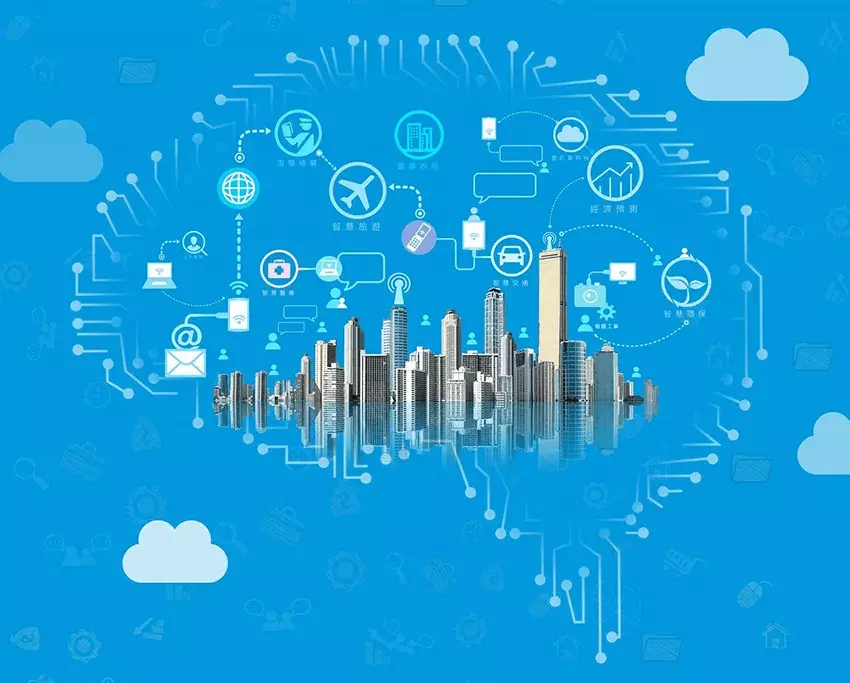
Smart cities are primarily information and communication technology (ICT) frameworks for developing, deploying, and promoting sustainable development practices in response to growing urbanization challenges.
Citizens can interact with the smart city ecosystem in a variety of ways. Pairing data and equipment with a city’s services and physical infrastructure can improve sustainability and reduce costs.
Citizens’ smartphones will become mobile driving licenses and ID cards with digital certificates, speeding up and simplifying access to the city and local government services.
Why do we need smart cities?
Urbanization is a never-ending phenomenon. There are 54 percent of the world’s population lives in cities. Combined with overall population growth, urbanization will add 2.5 billion people to cities in the next three years.
Social and economic sustainability is essential to keep up with this rapid expansion, which is placing a burden on our urban resources. In September 2015, 193 countries agreed on an agenda for the SDGS at the United Nations.
Citizens and local governments certainly have more flexibility to initiate rapid initiatives, and smart city technologies are critical to successfully achieving these goals.
10. Which city is called smart city?
San Francisco / Bay Area (Silicon Valley)
London, UK
New York City, NY, USA
Boston, MA, USA
Los Angeles, CA, USA
Paris, France
San Diego, CA, USA
Chicago, IL, USA
Seattle, WA, USA
Bangalore, India
Toronto, Canada
Tokyo, Japan
Hong Kong / Shenzhen, China (counted as one region)
Berlin, Germany
Denver, CO, USA
















